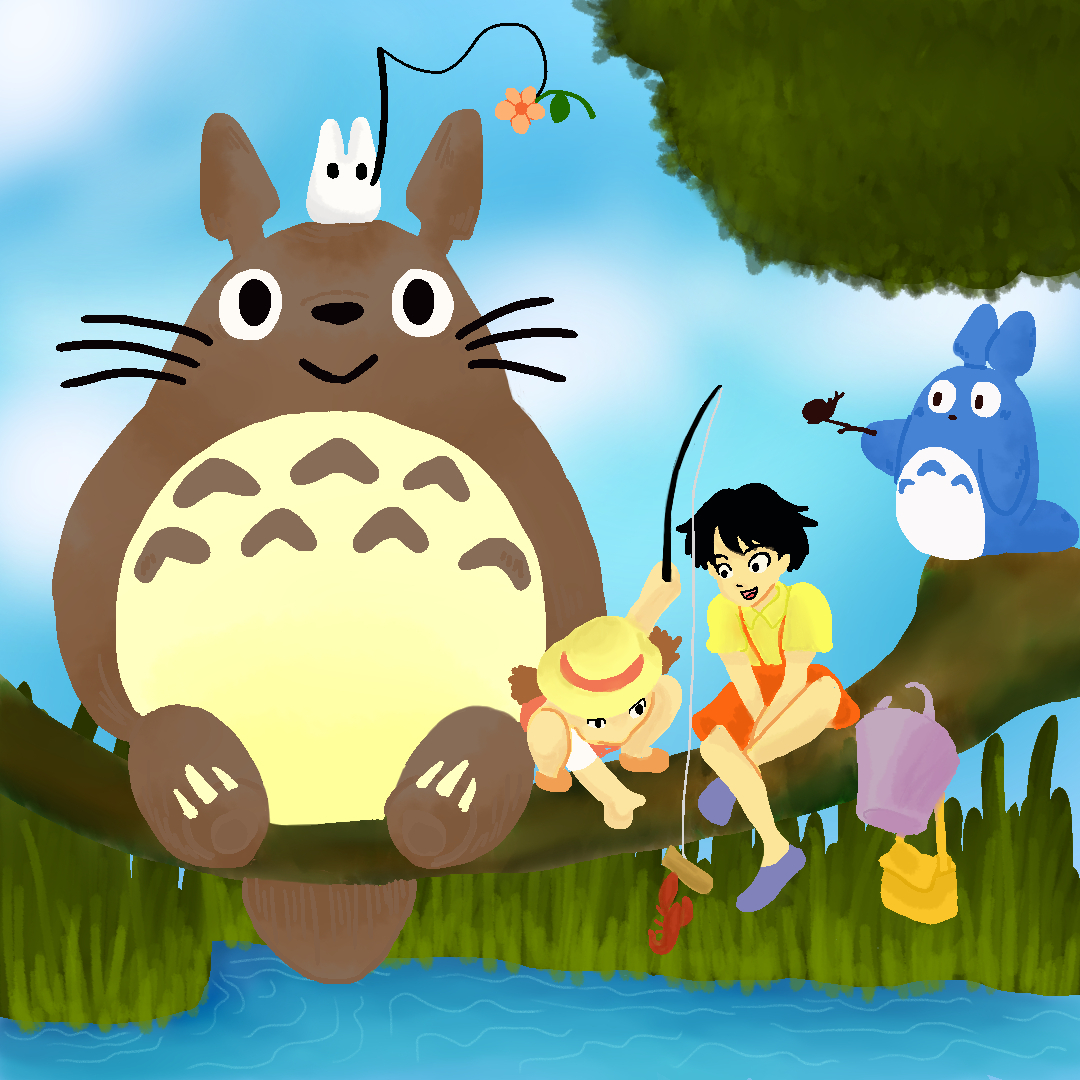Please visit response.fsu.edu for official FSU updates and resources.
Totoro, Where Were You?
 Japanese filmmaker Hirokazu Kore-eda has the captivating ability to leave audiences wanting more. It was only normal then, after watching Shoplifters on Hulu, I turned to Nobody Knows. But what does this have to do with Totoro?
Japanese filmmaker Hirokazu Kore-eda has the captivating ability to leave audiences wanting more. It was only normal then, after watching Shoplifters on Hulu, I turned to Nobody Knows. But what does this have to do with Totoro?
In order to see the correlation, it’s important to learn a little more about Nobody Knows. Like Shoplifters, this film was inspired by real events. In 1988, a case later known as “the affair of the four abandoned children of Nishi-Sugamo” reached the press. A mother left her four children, each with different fathers, for nine months in an apartment in Tokyo. Nobody Knows follows fictionalized versions of these children as they navigate through the many misfortunes that come their way. As conditions worsen and the children – the eldest of which is twelve years old – start running out of money and resources, the youngest two speculate about whether or not Totoro exists. This moment stands out because it recalls a whimsical, optimistic fantasy film by Studio Ghibli in a moment when the children are in dire need of saving or magic. Totoro, the iconic forest spirit from My Neighbor Totoro (1988), enhances the much-needed light in the darkness and misery surrounding the four siblings, but how?
Even though Totoro is only mentioned in one scene, the character is so popular the reference is enough to make that conversation memorable. It is easy to draw parallels between My Neighbor Totoro and Nobody Knows. At a surface level, both stories are about children and the challenges they face as they grow up without their mothers. In Nobody Knows, the children’s mother, Keiko (You), disappears for months at a time, leaving the eldest son, Akira (Yuya Yagira), in charge of the other siblings. In Totoro, the mother is missing from the household, but her absence is due to illness. The children in both movies are thus forced to grow up without maternal support, but the difference between them lies in the fantasy. The girls in Totoro have the support of the forest spirits, who help Satsuki find younger sister Mei when she disappears and who help the girls gain more independence and strength. The effect the spirits have on the girls’ upbringing is nicely demonstrated in the ending, when the girls are playing with other children and Mei is no longer imitating her older sister.
Strangely enough, Totoro is compared to a mother. In her book, My Neighbor Totoro and Children's Fantasy, clinical psychologist Shinichi Tanaka compares Totoro’s influence to that of a mother figure. While Satsuki and Mei’s real mother is away, Totoro steps in as a larger-than-life parent that “offers the girls the security that they most need.” Additionally, as a forest spirit, Totoro can also be interpreted as Mother Nature, as Rieko Okuhara does in her article “Walking Along With Nature: A Psychological Interpretation of My Neighbor Totoro.” These interpretations add another layer to the characters’ aforementioned conversation in Nobody Knows. By wondering if Totoro is real, they seem to be asking if they can be saved, like the girls in Totoro were. With Tanaka’s interpretation, this question also shows the characters are indirectly longing for their mother. Even further, there is a hopelessness associated with the question since they know they are in a city, far from any forests or any of their spirits.
There is a larger aspect of this hopelessness accentuated by the mention of Totoro and it relates to a characteristic of modern Japanese society. Since I am not qualified to delve into the specifics of this phenomenon, I will not comment beyond what I have read. Part of the charm of Totoro is the nostalgia, the longing for how life was in the post-World War II era – particularly, the sense of compassion between neighbors. Okahura mentions that “when Mei is missing, all the neighbors gather around to look for her, worried about her and anxious to find her. Nowadays, in urban areas of Japan, people generally do not even know their neighbors, much less care about each other.” This disassociation with other people is part of the problem in Nobody Knows. Had Akira’s neighbors paid more attention to his living situation and cared as much as the neighbors in Totoro, he and his siblings would have been spared from their unhealthy living conditions, though they would have likely been separated from each other. In Why Nobody Knows – Family and Society in Modern Japan, Alexander Jacoby explores the reasons why child abandonment occurs in Japan. Jacoby adds that:
“Whether or not one feels sympathy for Keiko, it is true that the problems confronting Akira and his siblings cannot be ascribed simply to the specific inadequacy of their parenting; rather, they are also a consequence of inadequacies in the political provision made for single-parent families, and, crucially, of wider social attitudes towards the family as an institution.”
Once again, the idyllic world in Totoro contrasts tragically with the all-too-realistic world of the children in Nobody Knows. However, the optimism and innocence with which the youngest siblings approach the idea of Totoro’s existence – and how they approach every other day, since the brunt of the adult responsibilities falls on the eldest brother Akira – inspires in the audience a sense of admiration and maybe even hope. The youngest two siblings, Yuki (Momoko Shimizu) and Shigeru (Hiei Kimura), have fun speculating what would happen if Totoro exists. Shigeru comically says that “The police would have caught him” since he is so large. This innocence is also seen in the way the youngest siblings distract themselves while they are at home. For instance, Yuki is seen happily drawing throughout the film even as her crayons diminish to minimal sizes, a symbol of the increasing hardship she and her siblings are enduring.
In an interview with IndieWire, filmmaker Kore-eda confirms what he “wanted to show more [than their plight as victims of abandonment] was children’s incredible stamina and lust for life and vulnerability and complexity — that’s also an aspect of children that tends not to get acknowledged.” It is thus the children’s resilience that really highlights the scene and makes it so captivating. Despite their worsening conditions and malnutrition, the youngest siblings keep their innocence and sense of humor. That quality is the true light in the darkness and the only source of optimism in the ending.
For those of you interested in this topic, watch Nobody Knows on Hulu and My Neighbor Totoro on HBO Max – which bought the U.S. streaming rights to Studio Ghibli films, including Kiki’s Delivery Service, Ponyo, Spirited Away, and many other fan favorites.
Do not be discouraged from watching Totoro for the first time if you’re an adult. I discovered it as a college student and was promptly transported to an idyllic version of my own childhood. It’s magical and convincing that way.
Written by: Isabella Massardi | Instagram



